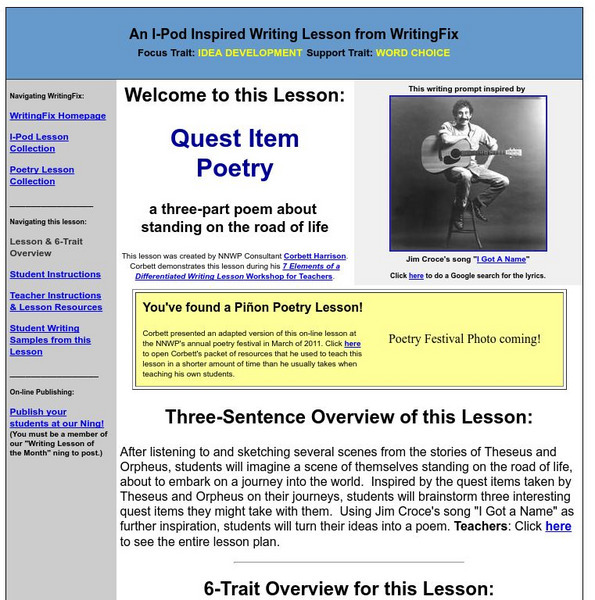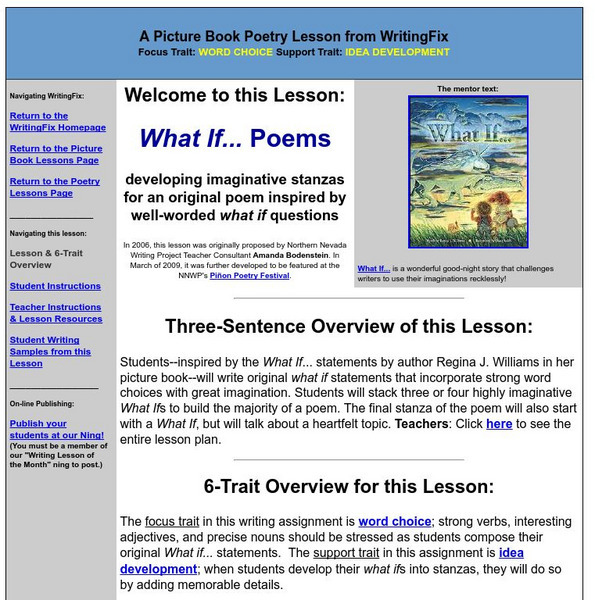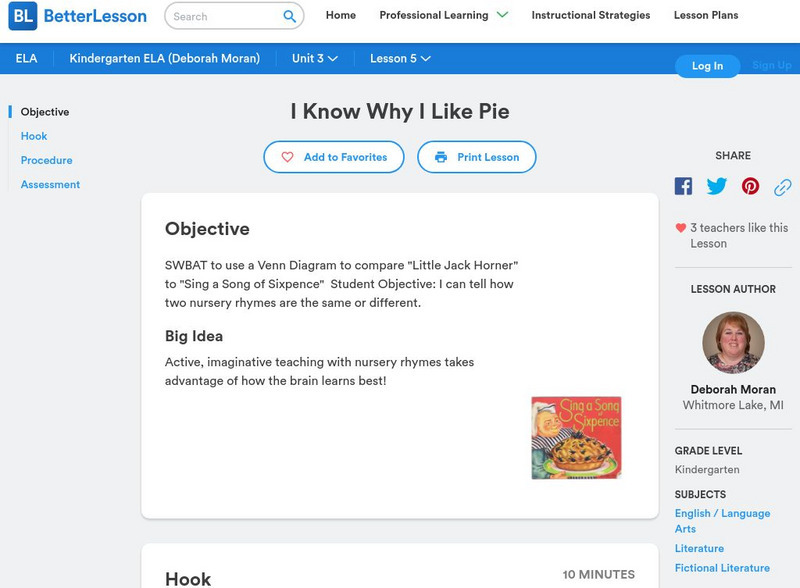Hi, what do you want to do?
Curated OER
If a Picture is Worth a Thousand Words...
Fourth graders take three different photographs representing the beginning, middle and end of their story. They use the Tool Factor program Fresco to add elements to enhance their creativity and make their writing come alive. They then...
Curated OER
Skellig
In this Skellig worksheet, students read to understand the works of David Almond and learn about his life. Students read eleven passages and then answer ten questions related to reading for meaning and understanding the author's craft.
Curated OER
Jazz In America
Students explore the Jazz Era in America not only by answering questions but listening to music as well.
Curated OER
Using Imagery
Show, don't tell! Pairs work together to change a list of telling sentences into showing sentences using picture words that create vivid pictures in the readers’ minds.
Curated OER
When a Country Loses Its Songs
Students explore music as a cultural tradition. In this global studies lesson, students consider the implications of the loss of childhood songs to a cultural group. Students determine the type of musical "treasures" that are part of...
Curated OER
Creating Sentences with Onomatopoeia Words
Third graders create sentences. In this sentences lesson students use onomatopoeia words to write sentences. They make a movement to match their onomatopoeia word. The students discuss why an author might use onomatopoeia in their writing.
Curated OER
Sgt. Humiston, Where are You?
Students become familiar with the events of the Civil War. In this identification lesson, students use deductive reasoning to understand how the deceased soldier was identified. Students view primary documents for information...
Curated OER
A Panel of Survivors
Students role-play real-life survivors in a panel discussion. They read a mini-biography about a survivor.
British Library
British Library: Coleridge's Kubla Khan: Composition
This activity, which aims to develop students' understanding of 'Kubla Khan' after completing an initial study of Samuel Taylor Coleridge's poem, will encourage students to make links between the poem and a number of historical sources.
Writing Fix
Writing Fix: Quest Item Poetry
After listening to and sketching several scenes from the stories of Theseus and Orpheus, students will imagine a scene of themselves standing on the road of life, about to embark on a journey into the world. Inspired by the quest items...
Writing Fix
Writing Fix: What if Poems: Developing Imaginative Stanzas for an Original Poem
In this lesson students will develop a "what if" poem using strong word choice and vocabulary.
British Library
British Library: Tennyson's the Charge of the Light Brigade: A Close Reading
In this activity, students will consider the context within which Alfred Lord Tennyson wrote 'The Charge of the Light Brigade'. The poem immediately captured the public imagination, where it has remained, testimony to heroic failure,...
Varsity Tutors
Varsity Tutors: Web English Teacher: John Donne
This online resource focuses on the life and work of John Donne. Includes links to related sources.
ReadWriteThink
Read Write Think: Responding to Gwendolyn Brooks' "We Real Cool"
Contains plans for five lessons based off Gwendolyn Brooks? ?We Real Cool? where students imagine they are the characters in the poem fifty years later. In addition to objectives and standards, this instructional plan contains links to...
Better Lesson
Better Lesson: I Know Why I Like Pie
Active, imaginative teaching with nursery rhymes takes advantage of how the brain learns best! In this lesson plan, students will use a Venn Diagram to compare "Little Jack Horner" to "Sing a Song of Sixpence"
Albright-Knox Art Gallery
Albright Knox Art Gallery: Kinetic Art Mobiles
Alexander Calder invented two new kinds of sculpture: mobiles and stabiles. In The Cone, he combines elements of each-a stabile, or non-moving sculpture, connected to a mobile, or moving sculpture. In this lesson, students use their...


















